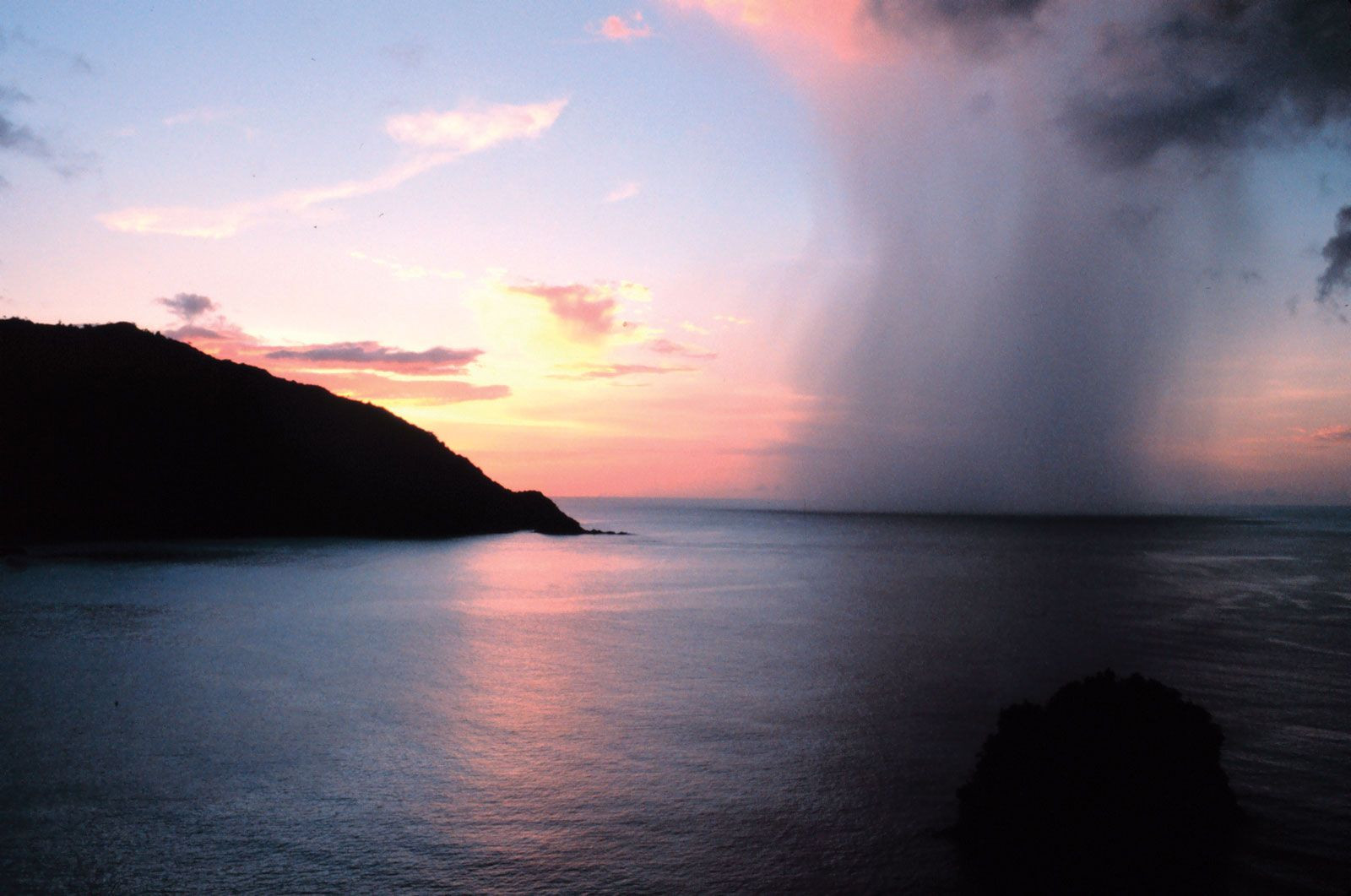Trinidad and Tobago, often simply referred to as Trinidad, is a dual-island Caribbean nation with a rich history and diverse ecosystems. But Where Is Trinidad exactly? Understanding its geographical location is key to appreciating its unique environment and cultural influences. This article will explore the location of Trinidad and Tobago and delve into its fascinating physical geography, climate, and wildlife.
Geographical Location of Trinidad and Tobago
Trinidad and Tobago is located in the southernmost part of the Caribbean, just off the northeastern coast of South America. Specifically, it lies a mere 7 miles (11 kilometers) from the coast of Venezuela. This close proximity to South America significantly shapes its geology, flora, and fauna, distinguishing it from many other Caribbean islands.
Location map highlighting the physical geography of Trinidad and Tobago, showing its position relative to Venezuela and the Caribbean Sea.
While geographically considered part of the Caribbean, Trinidad and Tobago’s geological structure is an extension of the South American mainland. This is most evident in Trinidad’s Northern Range, which is a continuation of Venezuela’s coastal Andes Mountains.
Trinidad’s Diverse Landscape: Relief and Drainage
The island of Trinidad boasts a varied topography characterized by three prominent mountain ranges that dictate its drainage patterns and contribute to its ecological diversity.
The Northern Range, the most striking physical feature, runs east to west across the island. It’s a direct continuation of the Andes Mountains from Venezuela, averaging around 1,500 feet (460 meters) in elevation. Mount Aripo, or El Cerro del Aripo, stands as the highest point in the country within this range, reaching 3,084 feet (940 meters). This range is not only significant for its height but also for its numerous waterfalls, including the impressive Blue Basin Falls and Maracas Falls, both cascading from a height of 298 feet (91 meters). South of the Northern Range, foothills approximately 500 feet (150 meters) in height gradually descend into the Northern Plain.
The Central Range traverses the island from southwest to northeast, forming a central spine. While less imposing than the Northern Range, it still features notable elevations, with Mount Tamana reaching 1,009 feet (308 meters) as its highest peak. Further south, the Southern Range, composed of lower hills, adds subtle undulations to Trinidad’s landscape, contrasting with the flatter areas.
These ranges dictate the flow of water across Trinidad. Numerous rivers, though generally short, crisscross the island. The Ortoire River in the south and the Caroni River in the north are the longest. Low-lying regions are marked by swamps, such as the Caroni Swamp in the northwest and significant clusters like the Nariva Swamp along the eastern and southern coasts.
The southern quarter of Trinidad is notable for its oil-bearing belt, extending westward into the Gulf of Paria and eastward into the Atlantic Ocean. This area also features mud volcanoes, formed by gas and water seepages, with Devil’s Woodyard being a well-known example. In the southwest, Pitch Lake, a deep asphalt deposit, represents another unique geological feature of Trinidad.
Tobago’s Geography
Tobago, the smaller island of the twin-island nation, shares geological similarities with both Venezuela and Trinidad. It too is considered a physiographic extension of the Venezuelan coastal range and Trinidad’s Northern Range.
The dominant geographical feature of Tobago is the Main Ridge, running from northeast to southwest. This ridge reaches heights of about 1,800 feet (550 meters) before sloping more gently towards the southwest, transitioning into a coral plain. Tobago’s coral formations have led to the development of numerous reefs, most famously the Buccoo Coral Reef. This reef is renowned for its vibrant marine life, making it a popular destination for scuba diving and snorkeling. However, pollution and tourism have unfortunately caused significant damage to the reef and its delicate ecosystem over time. Unlike Trinidad with its many rivers, Tobago has only a few short streams.
Tropical Climate of Trinidad and Tobago
Rain shaft and sunset over Man of War Bay, Tobago, illustrating the tropical weather patterns in Trinidad and Tobago.
Trinidad and Tobago experiences a tropical climate characterized by high relative humidity. Temperatures remain warm throughout the year. January and February are the coolest months, with average minimum temperatures around 68°F (20°C). April, May, and October are the warmest, reaching average maximum temperatures of about 89°F (32°C). Generally, average temperatures fluctuate between 77°F (25°C) in February and 85°F (29°C) in April. Daily temperature variations are noticeable, and coastal areas benefit from moderating sea breezes.
The islands have a distinct dry season from January to May and a lesser dry season, known as Petite Carême or Indian Summer, in September and October. Northeast trade winds are prevalent. While Trinidad and Tobago lies outside the main hurricane belt, Tobago has occasionally suffered from severe hurricanes, highlighting the potential for extreme weather events.
Plant and Animal Life
The vegetation zones across Trinidad and Tobago are clearly defined, reflecting variations in altitude and rainfall. The most elevated areas are typically covered in lush tropical rainforest vegetation. Human activity is also evident, with cultivated estates and small settlements interspersed within clearings in the hills. During the dry season, the hillsides are brightened by the orange blooms of the mountain immortelle tree, reaching heights of about 80 feet (25 meters), along with the pink and yellow flowers of poui trees. Sugarcane, a major agricultural product, is primarily cultivated on Trinidad’s Central Plain.
A vibrant Scarlet Ibis, a national bird of Trinidad and Tobago, perched in its natural habitat, showcasing the country’s rich avian biodiversity.
The Caroni Swamp, a designated bird sanctuary, is a haven for diverse birdlife. Flocks of white flamingos and egrets are common sights, alongside populations of the scarlet ibis, a national emblem. Despite its protected status, the bird population, including the scarlet ibis, has declined since the 1970s due to illegal hunting and pollution. Similarly, the Nariva Swamp, home to a variety of birds and mammals including manatees, faces threats despite its protected status, particularly from unauthorized rice farming. The greater bird of paradise was introduced to Little Tobago, another bird sanctuary, but had disappeared by the early 21st century. Leatherback sea turtles, an endangered species, utilize several nesting sites on the islands, with Matura Beach in Trinidad being particularly significant.
The forests of both islands are popular hunting areas for small game, with the paca, or lappe, being highly sought after. Other notable animals include the agouti, quenck (collared peccary), tattoo (armadillo), prehensile-tailed porcupine, and iguana. Four main reptile groups inhabit the islands: snakes, lizards, turtles, and crocodiles (caiman). Trinidad’s indigenous fauna also includes howler monkeys, though ocelots have vanished from the wild and howler monkeys are now rare. Overall, rapid urbanization and industrial development have placed significant strain on the islands’ wildlife populations.
In conclusion, Trinidad, as part of Trinidad and Tobago, is geographically positioned as the southernmost Caribbean island, uniquely close to South America. This location dictates its rich and varied geography, climate, and biodiversity, making it a fascinating place to explore both geographically and ecologically.


